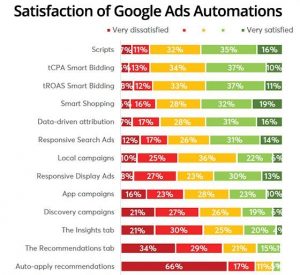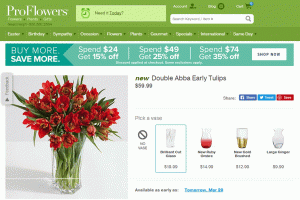
I’ve got a bit of news for you: You have considerably more competitors than you think you do.
Don’t believe me? OK, let me begin by asking a question: Do you know who your competitors are?
Seems like an easy enough question, right? I’m guessing that your answer would be something along the lines of “other businesses in my industry offering what my customer sees as being similar products or services to my own.”
Most business owners would probably agree with the above, wouldn’t you say? If you sell real estate, then your competition is other real estate agents. If you’re a bakery, your competition is other bakers.
However, today that’s no longer true. Not only are your industry peers no longer your main competition, they’re not even your most dangerous competition.
The bigger, more dangerous, more covert competitor to your business is…pretty much any product or service that offers your customer an alternative option to your value proposition.
Let me explain.
The Rise and Fall Of An Industry Leader
Thirty years ago Sony owned the personal music player industry. By the early 1980s everyone who was anyone owned a Sony Walkman, or a Walkman-type device. For more than 10 years the Walkman had more than a 50% market share over rival players, even though Walkmans were more expensive to buy.
Then MP3 files came along – and everything changed.
Sony was invested in the assumption that their customers, you and I, were always going to use cassette tapes as the carrier medium for our music. Cassettes had been around forever. Everyone you knew had a cassette deck somewhere – in their car, in their home hi-fi system, or as a portable “boombox” that they took with them on camping trips. Buying pre-recorded cassettes, or making mixtapes to listen to and share, was part of our music lives.
MP3 files, in contrast, were fiddly. They were not easily accessible and if you wanted to do anything with them you had to have a computer in your home – which most of us didn’t have (it was the end of the 1990s, after all). Sony bet the farm on staying with audio cassettes, even as young upstarts like Rio and Creative Labs started producing MP3 players, and began to gather a following. As digital music started to grow in popularity Sony finally woke up, dabbling with formats such as CD and MiniDisc.
Then in October 2001 Apple introduced the iPod. Apple combined an easy-to-use MP3 player with an easy way to get hold of MP3 files (i.e. via what was called the iTunes Music Store). At the same time people were buying personal computers, and internet availability (and bandwidth) started gaining ground. It proved to be a perfect storm.
Between the third quarter of 2004 and the third quarter of 2005, iPod sales increased by 616%. By 2008 Apple owned 48% of the MP3 player market. Sony was nowhere to be seen.
The Competition Is Often In The Last Place You Look
My point isn’t that Apple did what, in hindsight, Sony was perhaps better placed to do. My point is that Sony thought their competition was Panasonic, Philips, Akai and so forth – companies that made personal audio players like Sony did. They didn’t see Apple as a competitor until the rug was pulled from under them.
The basic lesson applies to pretty much any industry you care to name. If you’re a hotel chain, your competition isn’t just the likes of Marriott, or Holiday Inn, or Best Western. It’s Airbnb (and all its wannabees) too. If you’re VISA, your competition used to be MasterCard with maybe a touch of American Express and Diners Club thrown in. Now it’s PayPal, Apple / Google Pay, Square, Bitcoin, Transferwise…the list goes on.
Change The Way You See Yourself
Stop looking at your product or service as being just another solution among all the rest out there that address a certain need, or want. Instead, think of it as one option out of many, designed to get something done.
If you’re a printing company, don’t think of yourself as one supplier out of hundreds that can print a great brochure, catalog, or food package. Think of yourself as an option among many that helps your customers build relationships with their audience. If you sell hot water systems, don’t look at yourself as yet another heating manufacturer. Instead, think of yourself as one way for your audience to wake up to a warm house, or the indulgence of a warm bath at the end of a hectic day.
When you think about who your competition is, think further than just the businesses who are out to steal your customers, or beat you on price. Think about your competition in terms of capturing the ‘choice behaviors’ of your market.
It’s imperative that you see the field from your audience’s side of the fence – to understand the assumptions and choices they are making, and why they’re making them. The wider the view you take, the more likely you will discover the so-called “stealth competition” – and the more successful your marketing is likely to be.
Business & Finance Articles on Business 2 Community(29)
Report Post






